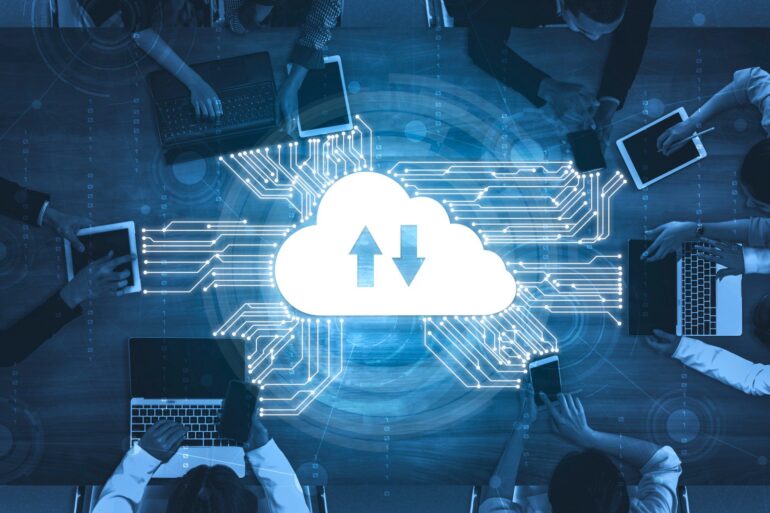TL;DR:
- Generative AI reduces cloud migration efforts by 30-50% when utilized effectively.
- LLMs are key in understanding system infrastructure, weaknesses, strengths, and successful migration.
- 40% of enterprises investing in AI are updating their investments, signifying AI’s growing importance.
- A symbiotic relationship exists between generative AI and cloud, accelerating innovation.
- Key generative AI use cases include content generation, customer engagement, data synthesis, and coding.
- Public cloud and off-the-shelf models offer cost-effective advantages.
- Regulated industries can implement guardrails to protect proprietary data.
- LLMs will thrive in hyperscale environments for the next 5-6 years.
- Overly complex AI models are unnecessary; simplicity can suffice.
- API gateways play a vital role in data security and real-time alerts.
Main AI News:
In a recent conference held in Singapore, McKinsey’s Bhargs Srivathsan delivered a compelling message to the business community. Generative AI, when harnessed effectively, has the potential to significantly reduce the complexities associated with cloud migration by an impressive 30 to 50 percent. According to Srivathsan, this is merely the beginning, and as large language models (LLMs) continue to evolve, the timeline for migrating workloads to the public cloud will continue to shorten, promising increased efficiency in the migration process.
The Power of Generative AI in Cloud Migration
Srivathsan emphasized the transformative role of LLMs in the cloud migration process. These advanced AI systems can analyze a system’s infrastructure, identify weaknesses and strengths, facilitate the migration of workloads, and subsequently employ AI-based tools to assess the success of the migration. Moreover, LLMs can be invaluable in tasks such as creating Architecture Review Board guidelines, streamlining the decision-making process for organizations.
A Growing Trend in AI Adoption
While many enterprises are just beginning to explore the possibilities of AI implementation, Srivathsan noted a significant trend among those already invested in AI. A remarkable 40 percent of these organizations are actively updating their investments, recognizing the immense potential that AI, and generative AI in particular, holds for their future success.
The Symbiotic Relationship Between Generative AI and Cloud
Srivathsan emphasized the symbiotic nature of the relationship between generative AI and cloud computing. Cloud infrastructure is essential for unleashing the full potential of generative AI, while generative AI, in turn, accelerates the migration to the public cloud and unlocks its inherent capabilities. This synergy between the two technologies presents an opportunity for organizations to drive innovation and competitiveness.
Key Use Cases for Generative AI
Srivathsan identified four major use cases where generative AI shines. These include content generation, enhancing customer engagement, creating synthetic data, and facilitating coding tasks. Notably, generative AI can be a game-changer when dealing with legacy code or translating it into a new programming language, especially when the original coders are no longer part of the organization.
The Advantages of Public Cloud and Off-the-Shelf Models
In her presentation, Srivathsan emphasized the advantages of utilizing public cloud services and off-the-shelf AI models. She highlighted that enterprises often lack the necessary access to Graphics Processing Units (GPUs) required for in-house AI model development. Additionally, off-the-shelf models are not only more accessible but also cost-effective, making them an attractive option for businesses.
Addressing Concerns in Regulated Industries
For organizations operating in regulated industries or dealing with proprietary data and intellectual property concerns, Srivathsan recommended implementing guardrails to ensure data security and compliance. These measures can help strike a balance between harnessing the power of AI and safeguarding sensitive information.
The Future of LLMs and the Importance of Latency
Looking ahead, Srivathsan predicted that LLMs would continue to thrive in hyperscale environments for the next five to six years as these models mature. She dispelled the misconception that ultra-low latency is a necessity for all use cases, stating that only specific applications like self-driving cars or real-time manufacturing operations require such precision.
Tailored Models: A Necessity or a Luxury?
Contrary to common misconceptions, Srivathsan urged enterprises not to overcomplicate their AI model requirements. She stated that organizations often feel the need for overly complex and large models when simpler ones can suffice. For instance, generating customer support scripts doesn’t necessitate a massive 65 billion parametric model.
The Vital Role of API Gateways
In closing, Srivathsan stressed the importance of not skimping on API gateways between an organization and the external world. These gateways serve as a crucial link, providing real-time alerts and ensuring that developers do not access non-proprietary models or sensitive data they shouldn’t be handling.
Conclusion:
The integration of generative AI into cloud migration processes presents a significant opportunity for businesses to enhance efficiency, competitiveness, and innovation. As organizations increasingly invest in AI and leverage the power of generative AI, the market can expect a surge in streamlined cloud migration solutions and improved overall business performance.

